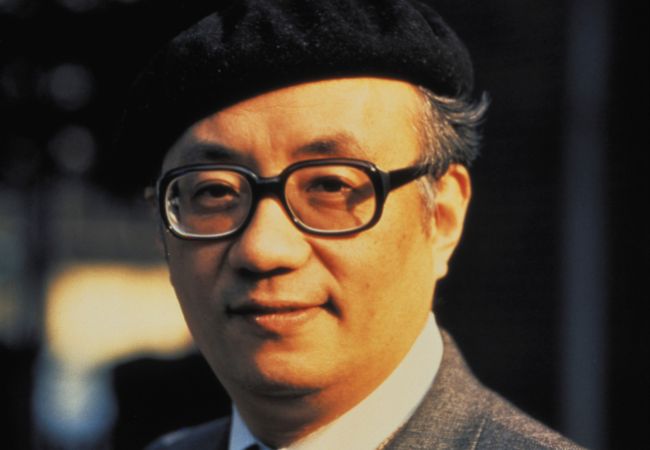To affirm that Osamu Tezuka is the god of manga can be a cryptic assertion for many: why a name probably little known to the general public is considered neither more nor less than a "god" of something called manga leaves many unknowns in the air. The National Museum of Catalonia (MNAC) has just inaugurated, however, a stunning retrospective of this Japanese author who seeks to unveil the keys of the manga as an artistic form of expression through his most important architect in an effort to decipher this universe for the great public.
Manga is the term used in Japan to refer to the comic, but not only that: in the long run, manga also refers to a style of making comic (be it drawn by French, Spanish or authors of any latitude), and it is also An industry The manga moves almost half of the comic book market worldwide, but it's not just about comics, but about anime (cartoons), all kinds of products and merchandising , festivals ...
In short, it means an aesthetic and even a way of life for some. The crucial figure that enabled the manga to exist was Osamu Tezuka .
Osamu Tezuka was born in Osaka prefecture in 1928 in a liberal family and with possible. His parents take care of giving him a good cultural nutrition and the young Osamu, as soon as he graduated in medicine, gives a blow to his life and decides to be a cartoonist. A profession that in Japan of the 40s, practically did not exist. With only 19 years, he published his first manga in 1947, The new treasure island that has a sweeping success and sells more than 40,000 copies. The traditional meaning of the word manga (before Tezuka) was cartoon, doodle, small graphic joke. That Tezuka sells 40,000 copies of its first manga symbolizes two relevant facts: first, that it stands as the inventor of a new language that would raise those “doodles” in a cultural category, but also that it introduces the manga as a form of mass entertainment in the market of postwar From then on, the manga in the hands of Tezuka would be enriched, sophisticated, legitimized, becoming enormous.
What does Tezuka contribute so that the manga ends up becoming a symbolic, aesthetic and expressive language? From his pencils sprout the most recognizable hallmarks of this universe like the big eyes of the characters, the suspended times or the dynamic design of the vignettes. Tezuka would forge his own language by combining elements of the cinema and the Silly Symphonies , the Disney cartoons of the 30s and 40s. To all this he added action, drama and a lot of movement . In his manual Manga no kakikata ( How to draw manga ), Tezuka would end up revealing the three essential aesthetic elements of the ideal manga: Shoryaku (synthesis), Kochi (exaggeration) and Henke (metaphor). Here is the magic tripod on which the manga universe is based.
The successes would occur in the 50s and 60s for Tezuka, and it is time for internationalization thanks to the character of Astroboy (in the picture). This brave hybrid, half boy half robot, will be one of his most timeless creations and condenses the spirit that spreads the entire work of Tezuka: optimism and faith in the human race. Tezuka, like other Japanese artists who develop their work after World War II, endorse a certain mission: to rebuild society after the disaster , to smile in the future, to be activists of enthusiasm. Characters like Astroboy , Kimba the white lion or Sapphire (from the series The Princess Knight ) are optimistic heroes with an important humanist background. Tezuka's philosophy would culminate with the Fenix series, a 12-volume comic that addresses the possibility of reincarnation and the lessons for humanity learned at the cosmic level.
Astroboy was the first animated series that would cross the borders of Japan and be seen in the West. Thus begins the international dissemination of the author's work. His creations would fascinate Stanley Kubrick, who would invite Tezuka to be the artistic director of 2001, an odyssey of space . The author, however, rejects the offer focused as he was in carrying out his animation studio. The international penetration of Tezuka's work would, on the other hand, reap more bitter episodes, such as the alleged plagiarism that would be carried out by the Disney factory in 1994 of his character Kimba , the white lion (created in 1950) in the well-known Lion King . To this day, and despite the obvious coincidences, Disney has not recognized any influence of the teacher. Paradoxically, Tezuka continues to receive, even after its disappearance, the name of the Eastern Walt Disney.
The aesthetic contributions that Osamu Tezuka makes to Japanese and Western visual culture are crucial . Its volume Adolf , about the Nazi holocaust, is considered a comic book masterpiece.
We find the manga more or less attractive, the MNAC offers an extraordinary exhibition that allows us to observe an interesting process of cultural legitimization ( from the doodle to the great entertainment industry that is the manga ), and is eloquent about the great impact that art popular has in the psychology of a society.
Aware of this, Tezuka wanted to define in his autobiography the spirit of manga and thus described its potential : «It is emotion. The sleeve is resistance. The manga is strange. The manga is touching. The manga is destruction. The manga is arrogance. The manga is love ».
According to the criteria of The Trust Project
Know more- culture
- art
- Japan
The Paper SphereJoan Jonas: "First are the images, then the ideas
Culture They take their place at the Prado Museum
Arte200 anniversary of the Prado Museum: Goya, sniper of drawing against atrocious Spain

